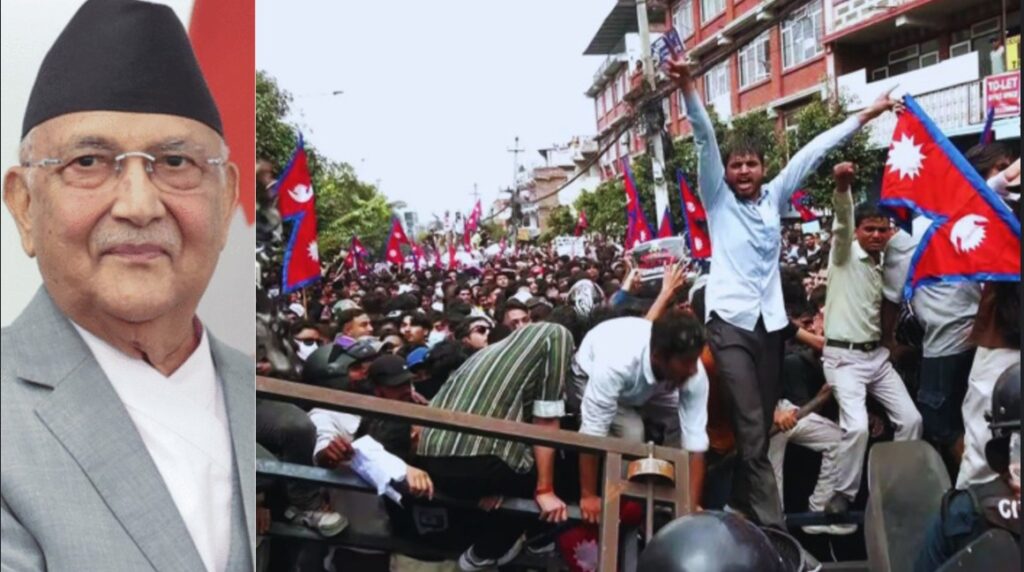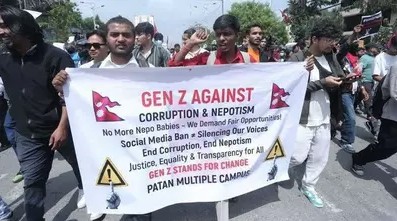By Sarosh Mustafa

Kathmandu: Nepal is in the grip of its most dramatic political upheaval in decades as Gen Z-led protests, triggered by a sweeping social media ban, have spiraled into a nationwide anti-corruption movement. The unrest has left 19 dead, paralyzed state institutions, and forced the resignation of Prime Minister Khadga Prasad Sharma Oli and President Ram Chandra Poudel, who fled the country.
The catalyst was the government’s abrupt September 4 ban on 26 major social media platforms, including Facebook, YouTube, Instagram, WhatsApp, and X (formerly Twitter). Officials cited regulatory non-compliance, but the public saw it as outright censorship.
The crackdown backfired. Young Nepalis, disillusioned by corruption, joblessness, and inequality, flooded the streets, torching government buildings, storming media offices, and halting flights at Tribhuvan International Airport.

Oli’s Fall and India’s Setback
Prime Minister K. P. Sharma Oli, long criticized for his pro-India tilt, particularly his support for the controversial 1996 Mahakali Treaty on water sharing, became the focal point of public anger. His ouster is seen as a major blow to New Delhi’s influence in Kathmandu.
For Pakistan and China, however, Oli’s departure signals an opening. Analysts suggest that China’s sway in Nepal could grow stronger, reinforcing the emerging Pak-China regional alignment.
A Youth Awakening
More than just about apps, the uprising has become a generational call for justice. Gen Z protesters have adopted symbols like the Straw Hat pirate flag from One Piece anime, turning it into a banner of defiance against entrenched elites.
Even with the social media ban lifted, demonstrations continue, fueled by demands for accountability, transparency, and jobs.

What’s Next?
Nepal now faces an uncertain road under a caretaker government tasked with stabilizing the political order while managing a restless, energized youth. The crisis has already shifted South Asia’s power balance, exposing India’s waning influence and creating new space for China—and by extension Pakistan—to expand their foothold in the Himalayan corridor.























